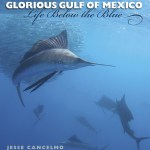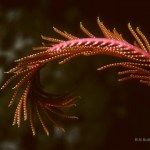underwater photography
Photographer Jesse Cancelmo was struck by the general lack of understanding of the sea life and ecology of the Gulf of Mexico that became apparent with the big oil spill in 2010, and this inspired him to carry out a major photographic project in the Gulf.
He felt many had written off the Gulf as a post-environmental disaster dead zone. While environmental effects in the Gulf are certainly very important, it is still a living, thriving ecosystem, the product of Candelmo's work, Glorious Gulf of Mexico: Life Below the Blue, attests to this.
This is a stunning coffee table type book (but…
Even the clearest water has at least some particles suspended in it -- sand, silt, plankton, who knows what -- and most of the time, in most places, the water isn't really all that clear. In fact, during a plankton bloom or after a storm that has caused a lot of runoff, you might just as well leave your camera on the boat. Light from a camera strobe has a nasty habit of bouncing back from any particulate matter that it encounters between the camera lens and the subject. The result is the bane of underwater photography: backscatter. Your images will look as though they were taken in a…
tags: Photographer and Goliath Grouper, Nature's Best Photography, underwater photography, Florida, image of the day
Photographer and Goliath Grouper, Epinephelus itajara.
Image: Michael Patrick ONeill/MSNBC Nature's Best Photography 2008 [larger view].
Photographer comment:
The Goliath grouper is a large predator found in Atlantic, Caribbean, and eastern Pacific reefs. Reaching eight feet in length and weighing up to 800 pounds, it feeds on fish, stingrays, lobster, and even small sea turtles. The ocean off Jupiter, Florida, is a great place to photograph Goliath groupers. They tend to…

